Ivan Sergei
Mira Str.40-2, 222307, Molodechno Belarus
seriv76@tut.by
Abstract: This article presents the results of radio observations made in March 2021. The results of the radio observations are compared with the CAMS video network summaries.
1 INTRODUCTION
The observations were carried out at a private astronomical observatory near the town of Molodechno (Belarus) at the place of Polyani. A 5 element-antenna directed to the west was used, a car FM-receiver was connected to a laptop with as processor an Intel Atom CPU N2600 (1.6 GHz). The software to detect signals is Metan (author – Carol from Poland). Observations are made on the operating frequency 88.6 MHz (the FM radio station near Paris broadcasts on this frequency). “The “France Culture” radio broadcast transmitter (100 kW) I use is at about 1550 km from my observatory which has been renewed in 1997.
2 Automatic observations
There are no active visual or daylight meteor showers in March (Rendtel, 2021). The average approximate background hourly signal activity is 3–20. Figure 1 shows the hourly rates of radio meteors in March 2021 at 88.6 MHz. Figure 2 shows the corresponding heat map.
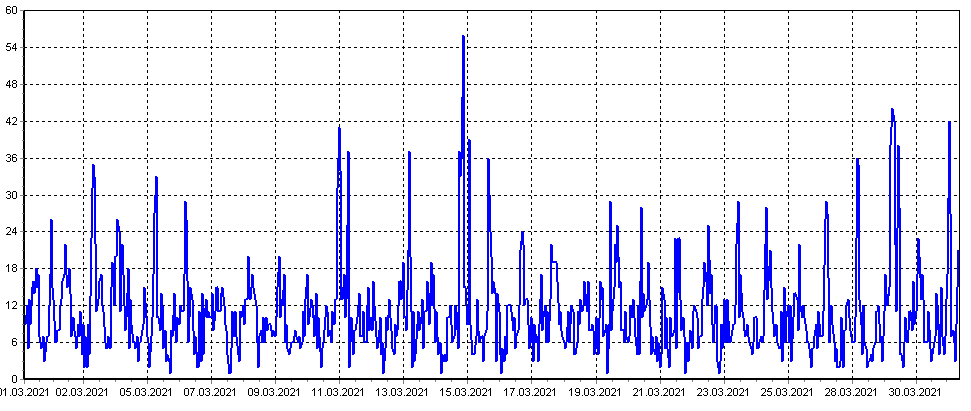
Figure 1 – Radio meteor echo counts at 88.6 MHz for March 2021.
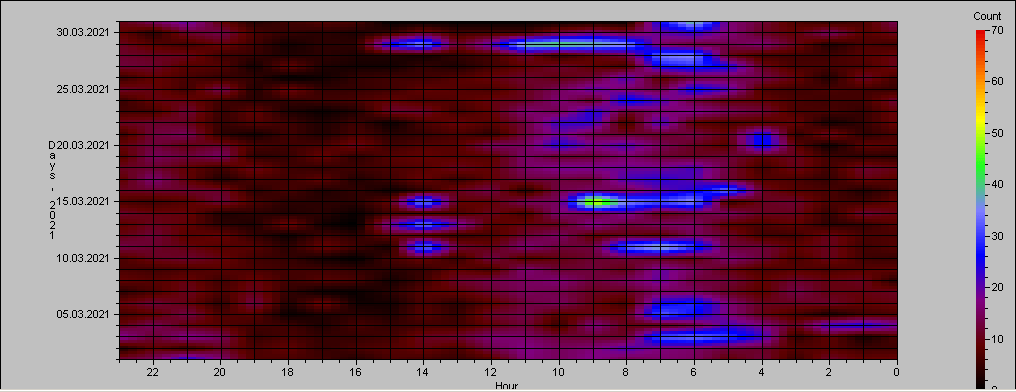
Figure 2 – Heatmap for radio meteor echo counts at 88.6 MHz for March 2021
3 Listening to radio echoes on 88.6 MHz
Listening to the radio signals 1 to 3 times a day for one hour was done in order to control the level of the hourly rates, as well as to distinguish between periods of tropospheric passage and other natural radio interference. The total effective listening time was 72 hours. A slight increase in the level of activity is noticeable from about March 14 to 20.
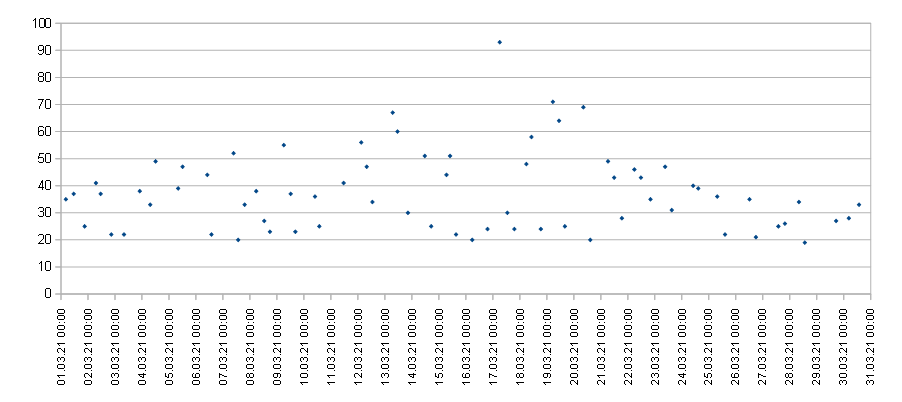
Figure 3 – The result with the calculated hourly numbers of meteor echoes by listening to the radio signals during March 2021.
The difference in activity levels between the listening method and the automatic observations can be explained by the fact that listening to the radio echoes allows to hear weaker meteor signals that remain too weak for recording by the software.
4 Fireballs
In order to quickly search for signals of the radio fireballs, the program SpectrumLab was running in parallel to the Metan program. Screenshots were saved every 10 minutes. The search for fireball events was performed visually by viewing many thousands of screenshots obtained over a month. Then, we selected fireball events from the log files of the Metan program. For fireball activity statistics, I have selected signals from the log files with a peak power greater than 10000 as fireballs and with a signal duration greater than 10 seconds. Figure 4 shows the daily activity of the fireball radio signals.
Daily activity of fireballs did not exceed 3, indicating a “quiet” month in terms of activity. Figure 5 displays one of the fireball radio echoes.
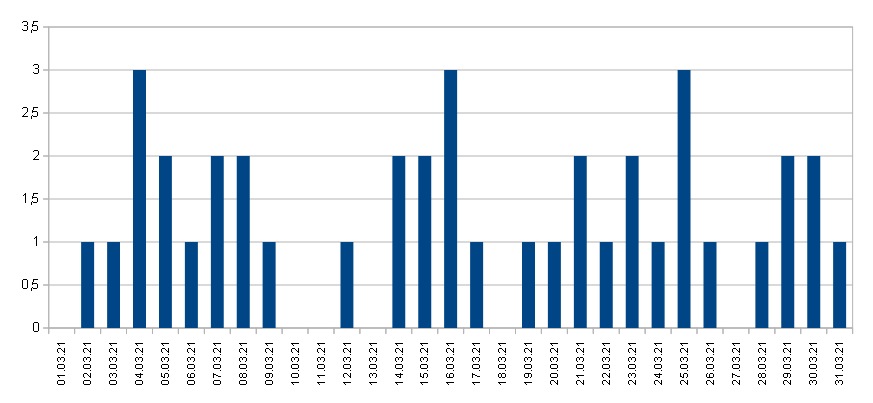
Figure 4 – Daily activity of radio fireballs during March 2021.
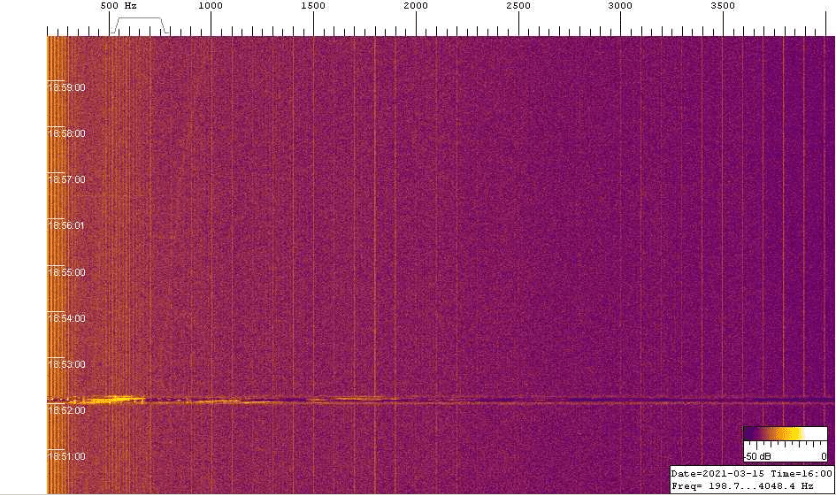
Figure 5 – Radio fireball recorded by SpectrumLab on March 15 at 15h52m UT.
5 CAMS Data
Figure 6 shows the total daily activity of meteors from the CAMS video network data (Jenniskens et al., 2011). There is a noticeable correlation between the activity level of sporadic meteors and the activity level of shower meteors.
CAMS data show a weak increase in the activity level of the shower meteors in the period March 15–22, as well as an increase in the activity level of the sporadic background meteors.
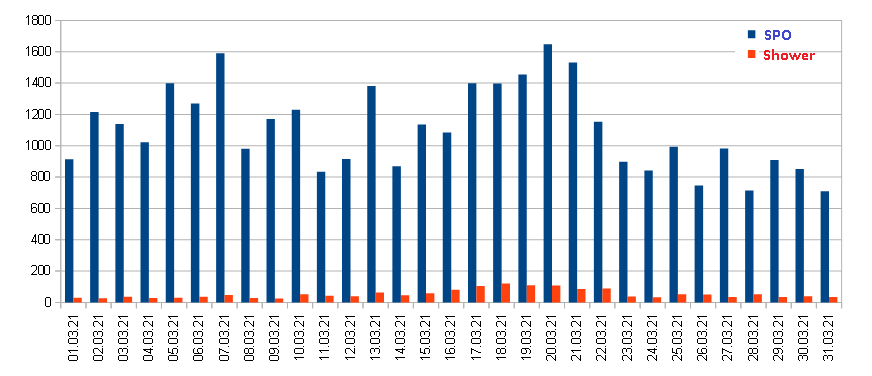
Figure 6 – Daily video meteor activity during March 2021 according to CAMS video networks.
6 Conclusion
The weak increase in radio meteor activity in the time interval March 12–22 is confirmed by CAMS data, which show a weak increase in shower and sporadic meteor activity during March 15–22. Automatic observations show a shorter time interval for a weak increase in signal activity from about March 11 to 15. This can be explained by the registration of larger meteoroids recorded automatically compared to the radio listening method. A joint analysis of the observations by different methods will show more reliable activity behavior by the meteors during this month.
Acknowledgment
I would like to thank Sergey Dubrovsky for the software he developed for data analysis and processing of radio observations (software Rameda). I thank Carol from Poland for the Metan software. Thanks to Paul Roggemans for his help in the lay-out and the correction of this article.
References
Rendtel J. (2021). “Meteor Shower Calendar”. IMO.
Jenniskens P., Gural P. S., Dynneson L., Grigsby B. J., Newman K. E., Borden M., Koop M., Holman D. (2011). “CAMS: Cameras for Allsky Meteor Surveillance to establish minor meteor showers”. Icarus, 216, 40–61.

